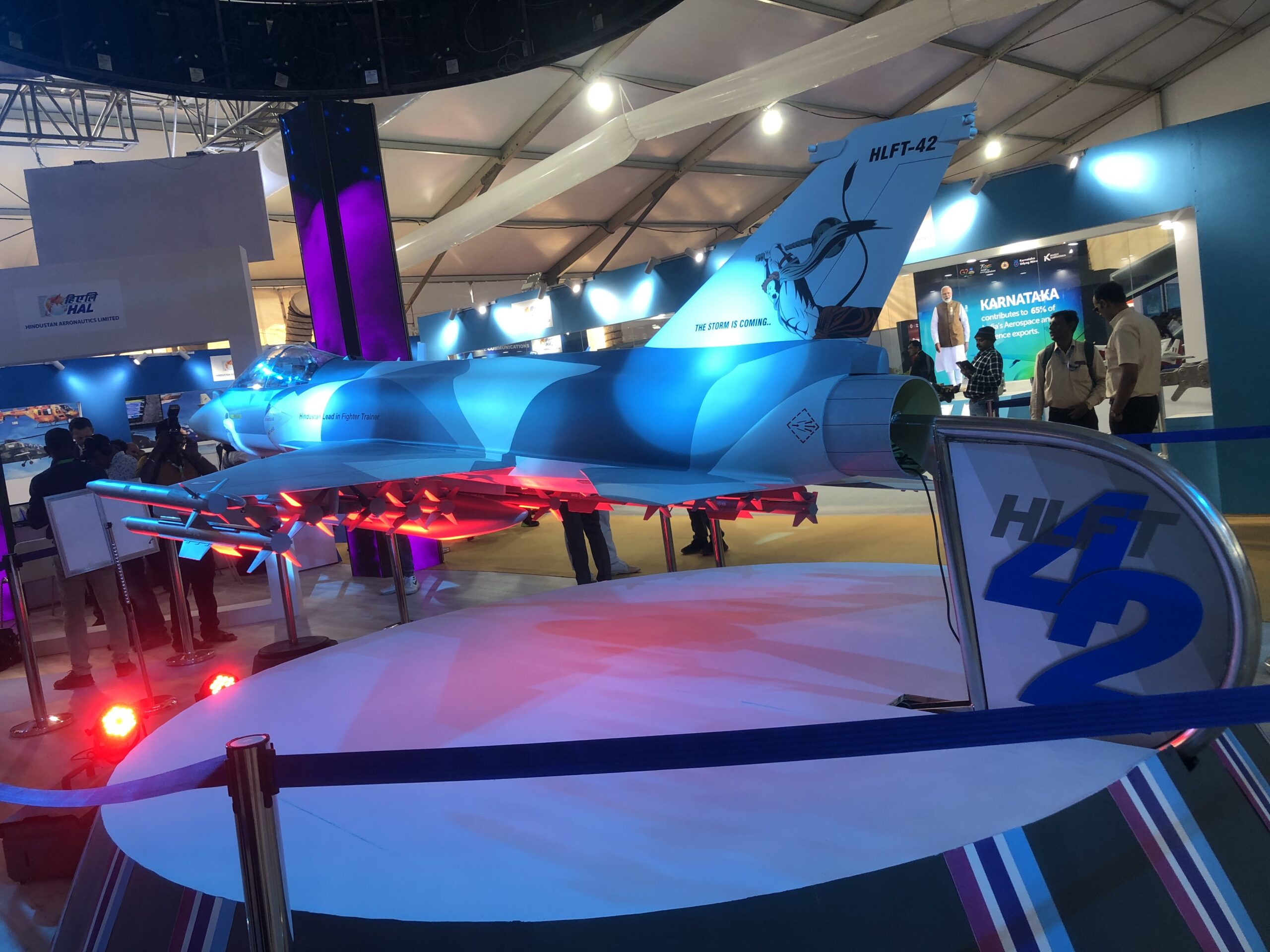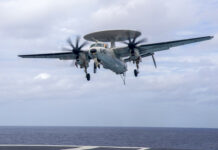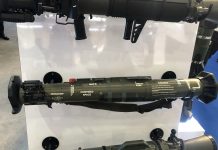Aimed at bridging the gap between existing trainers and basic fighters with supersonic capability, India’s government-owned Hindustan Aeronautics Limited (HAL) has unveiled a scale model of a next-generation jet trainer called the Hindustan Lead-in Fighter Trainer (HLFT-42) at Aero India 2023, which runs from 13-17 February in Yelahanka, Bangalore.
The supersonic HLFT-42, designed to train future fighter pilots in contemporary combat missions, is equipped with an ultra-modern training suite, preparing the pilots comprehensively for a fifth-generation combat environment and thereby playing a critical role in modern combat air training. The HLFT-42 features state-of-the-art avionics including an active electronically scanned array (AESA) radar, an electronic warfare suite, an infrared search and track (IRST) system and fly-by-wire controls.
Indian Air Force (IAF) Group Captain Harshvardhan Thakur, from the HLFT-42 development team, stated at Aero India, “From the conception stage to induction, it could take anywhere from five to six years for this trainer to be in service. If the need arises the HLFT-42 can be converted into a fully fledged fighter aircraft also by integrating weapons like CCM [close combat missiles] and Astra [beyond-visual-range air-to-air] missiles.”
The trainer is capable of carrying a full complement of Astra-1, Astra-2 and Astra-3 missiles along with short-range dogfighting missiles.

As of now the number of HLFT-42s ordered by the IAF is not known. Presently the IAF uses the Pilatus PC-7 and HAL HTT-40 for basic training, followed by the HAL Kiran Mk I for stage two training. According to reports the Kiran Mk I will be replaced by the HAL HJT-36 trainer. Stage three training is conducted on the BAE Systems Hawk Mk I advanced jet trainer, which is licence-built by HAL.
Other features of the HLFT-42, according to HAL, are its superior kinematic performance suitable for twin-engine fighter training, sustained endurance for practising multiple combat situations and exercises, and embedded virtual training system for realistic combat scenarios and large-force engagements. The HLFT-42’s combat sensors also feature training as well as operational capabilities.
HAL is marketing the HLFT-42 as a cost-effective platform that gives young fighter pilots comprehensive exposure to all sensors, weapons and roles executed by modern air powers.
Suman Sharma












